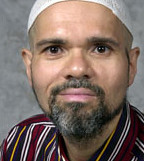Rare Method Interactive, an interactive marketing firm recognized as Alberta's second fastest-growing company by Alberta Venture magazine in 2007, knows something about the media. The media loves studies, especially those that seem compelling, if not a bit askew.
On March 1, Rare Method launched Kudos, which is billed as "a fast, fun, and easy way to harness employee recognition, improve communication, enhance productivity, and foster a positive corporate culture." Sounds amazing, and so does the study that graced the lead paragraph in the release...
"Studies show that 79% of employees leave their jobs in part due to a lack of recognition. Overall, 65% of employees felt that they were not recognized at all in the past year. Further studies say that 75% of employees are not fully engaged in their jobs. Steady economic growth and an aging work force are likely to result in further labor shortages and make the task of retaining skilled workers more difficult."
That's pretty big news, I thought, relevant in communication as well as recruiting. But just to be safe, I e-mailed the release's contact, a "PR Wizard" at Synergy Marketing & PR, inquiring what study the release references and where I might see the methodology. I received a prompt reply: "I am going to get the president to respond to your inquiry as they are his references."
Given that was Friday and today is Tuesday, and a growing number of media outlets including CNW Telbec, WDBJ7/CBS, Mediacaster, HULIQ, The Seattle Times, and others, along with several bloggers, already ran the Rare Method release in its entirety, I'm thinking that the the study may be as credible as the product tagline is original "Thank Different." Um, yeah. Right.
Still, I really don't know whether or not the numbers were pulled out of the sky so I'm going to give them the benefit of the doubt, for now. I'm more miffed that the media continues to run studies without asking the simplest questions, including sampling size and methodology. Next thing you know, someone will start writing something like "According to a CBS television network affiliate, studies show that 79% of employees leave their jobs in part due to a lack of recognition."
Except, we don't really know that this is true. It's a hard lesson to learn when you're looking for numbers. I became sensitive to studies and methodology years ago, primarily because of debunking several studies that our local media had run to further "best intention" agendas. Amazingly low sample sizes, erroneous questions, and logic leaps bigger than the Grand Canyon are tossed into the mix every day and the media screams for more.
Sometimes, as illustrated by Rare Method Interactive, you don't even have to cite the study to get some play out of the information. Just make it up, that's enough. Toss in an oh-so-original tagline "Got Studies?" and you're in business.
Of course I don't think it is enough. In fact, if you spend enough time looking up the studies that we do highlight, you'll see the common denominator is that they often make sense (or we question them if they do not). Er, on second thought, someone just read my blog and e-mailed me for advice ... and based on this comprehensive analysis of data (of one), I'm sending out a release tomorrow to say that we're the most influential in our field. Ha!

On March 1, Rare Method launched Kudos, which is billed as "a fast, fun, and easy way to harness employee recognition, improve communication, enhance productivity, and foster a positive corporate culture." Sounds amazing, and so does the study that graced the lead paragraph in the release...
"Studies show that 79% of employees leave their jobs in part due to a lack of recognition. Overall, 65% of employees felt that they were not recognized at all in the past year. Further studies say that 75% of employees are not fully engaged in their jobs. Steady economic growth and an aging work force are likely to result in further labor shortages and make the task of retaining skilled workers more difficult."
That's pretty big news, I thought, relevant in communication as well as recruiting. But just to be safe, I e-mailed the release's contact, a "PR Wizard" at Synergy Marketing & PR, inquiring what study the release references and where I might see the methodology. I received a prompt reply: "I am going to get the president to respond to your inquiry as they are his references."
Given that was Friday and today is Tuesday, and a growing number of media outlets including CNW Telbec, WDBJ7/CBS, Mediacaster, HULIQ, The Seattle Times, and others, along with several bloggers, already ran the Rare Method release in its entirety, I'm thinking that the the study may be as credible as the product tagline is original "Thank Different." Um, yeah. Right.
Still, I really don't know whether or not the numbers were pulled out of the sky so I'm going to give them the benefit of the doubt, for now. I'm more miffed that the media continues to run studies without asking the simplest questions, including sampling size and methodology. Next thing you know, someone will start writing something like "According to a CBS television network affiliate, studies show that 79% of employees leave their jobs in part due to a lack of recognition."
Except, we don't really know that this is true. It's a hard lesson to learn when you're looking for numbers. I became sensitive to studies and methodology years ago, primarily because of debunking several studies that our local media had run to further "best intention" agendas. Amazingly low sample sizes, erroneous questions, and logic leaps bigger than the Grand Canyon are tossed into the mix every day and the media screams for more.
Sometimes, as illustrated by Rare Method Interactive, you don't even have to cite the study to get some play out of the information. Just make it up, that's enough. Toss in an oh-so-original tagline "Got Studies?" and you're in business.
Of course I don't think it is enough. In fact, if you spend enough time looking up the studies that we do highlight, you'll see the common denominator is that they often make sense (or we question them if they do not). Er, on second thought, someone just read my blog and e-mailed me for advice ... and based on this comprehensive analysis of data (of one), I'm sending out a release tomorrow to say that we're the most influential in our field. Ha!

















